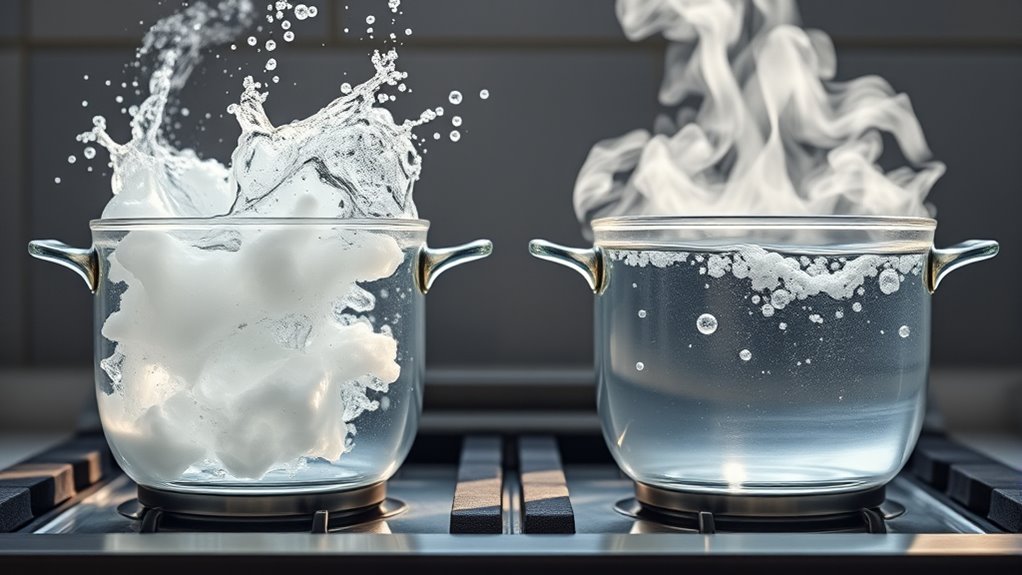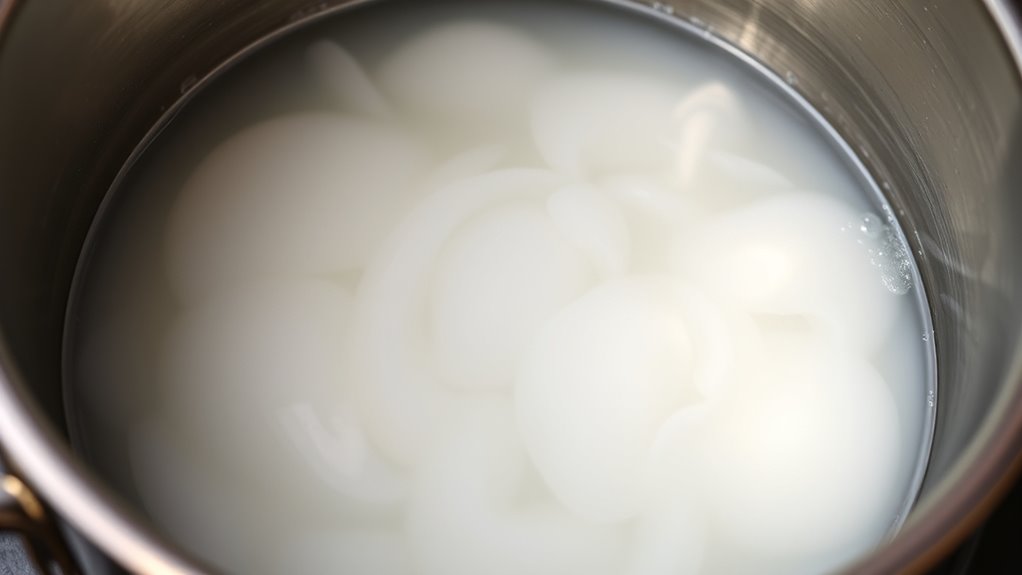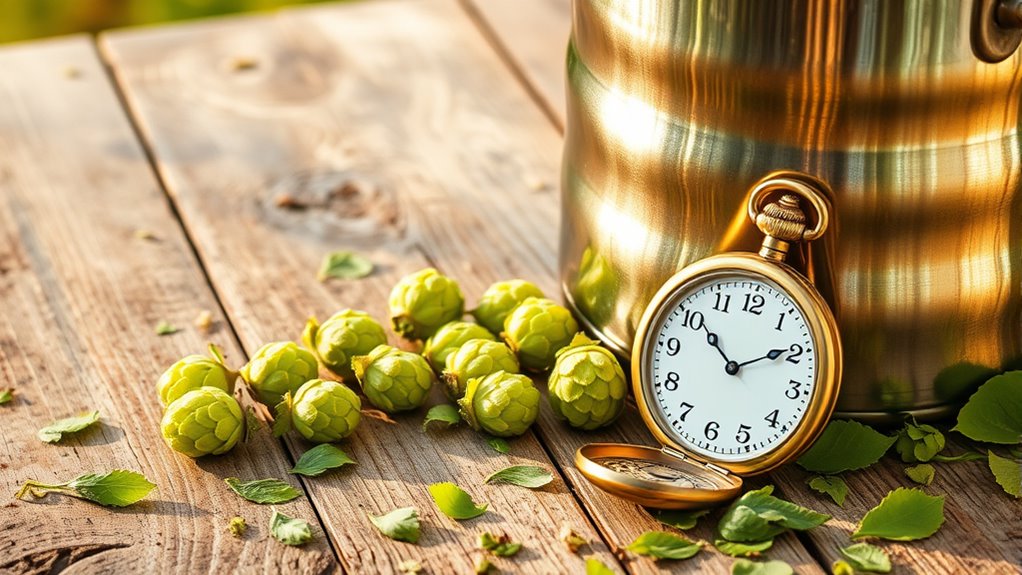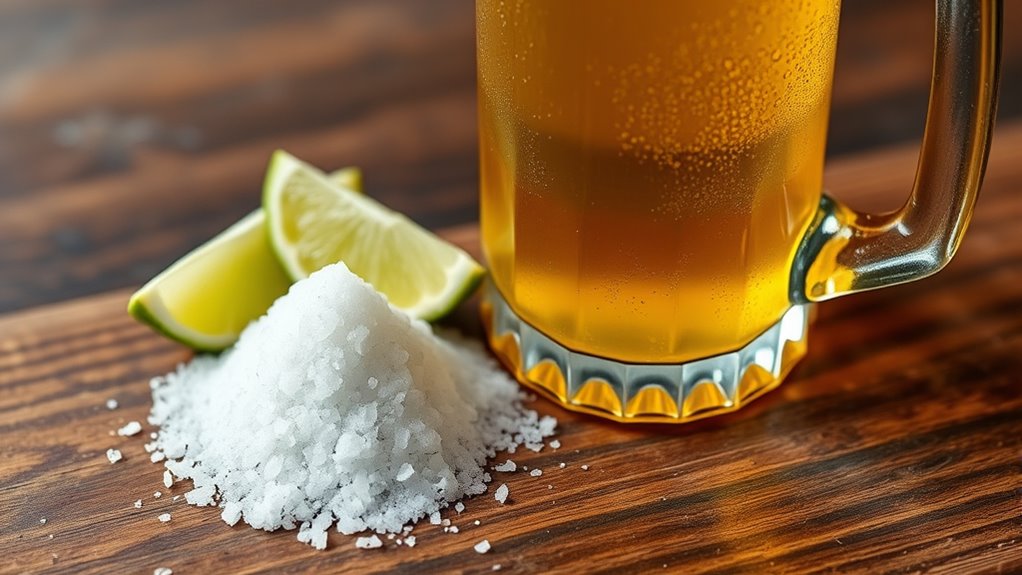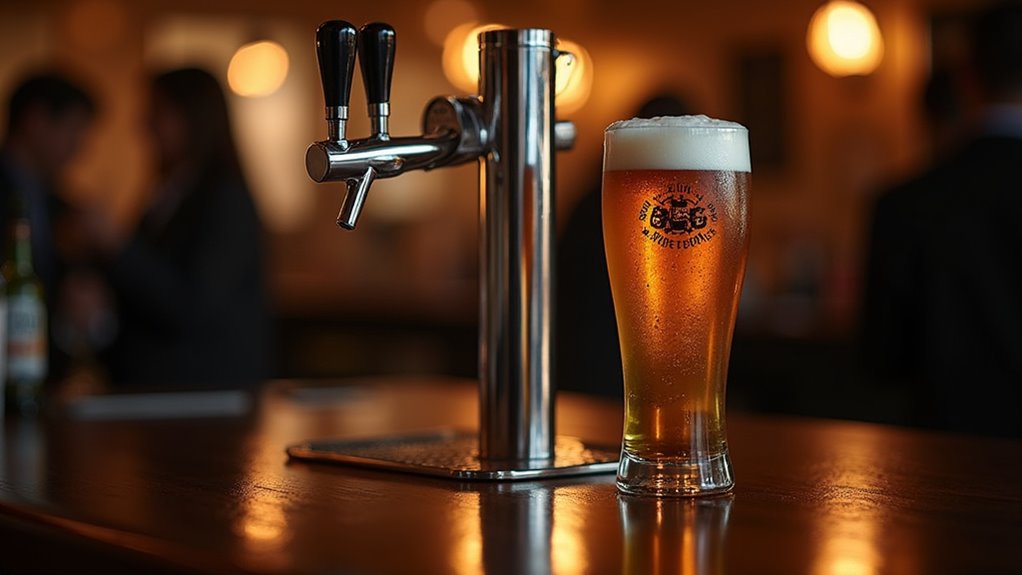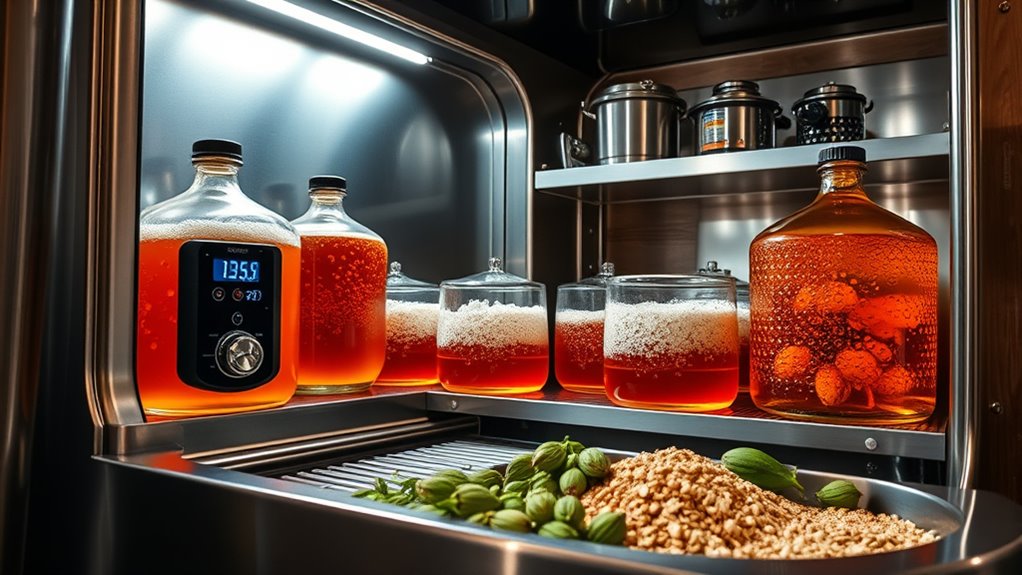A rolling boil, reaching 212°F, is more effective than a gentle simmer, as it produces large bubbles that guarantee rapid and even cooking. This technique is perfect for boiling pasta or blanching vegetables, preventing sticking while promoting thorough heat distribution. In contrast, a gentle simmer, which occurs at 180°F to 205°F, is ideal for delicate proteins and flavor infusion in soups. Understanding these differences is essential for mastering cooking techniques, and there’s more to explore on ideal boiling methods.
At a Glance
- A rolling boil reaches 212°F, ensuring rapid cooking and even heat distribution for ingredients like pasta and grains.
- Large, vigorous bubbles in a rolling boil prevent sticking and promote thorough cooking of food.
- Boiling is essential for sterilizing equipment and ingredients in homebrewing, enhancing flavor extraction from hops.
- Quick cooking methods like rolling boil save time compared to the gradual process of gentle simmering.
- Maintaining a rolling boil helps avoid off-flavors by evaporating unwanted volatile compounds during cooking.
Understanding the Rolling Boil
A rolling boil is an essential cooking technique that occurs at 212 degrees Fahrenheit, and it plays a significant role in food preparation. When you achieve a rolling boil, you’ll see large, vigorous bubbles breaking the surface, ensuring even cooking.
This technique is particularly important for quickly cooking pasta, grains, and legumes, as well as blanching vegetables. To maintain a rolling boil, monitor and adjust heat levels, especially after adding ingredients.
Unlike simmering, which uses gentle bubbling, a rolling boil cooks food rapidly, preventing sticking and promoting thorough heat distribution, thereby preserving the texture of starchy foods.
Helpful Hints:
- Always watch the pot closely.
- Adjust heat as needed.
- Use a lid to maintain temperature.
The Characteristics of Gentle Simmer
When you shift from a rolling boil to a gentle simmer, the cooking technique changes considerably. Simmering occurs at temperatures between 180°F and 205°F, producing small, sporadic bubbles.
This method is ideal for cooking vegetables and delicate proteins, allowing even cooking without toughening. The gentle heat infuses flavors in soups and sauces, as herbs release their aromas gradually.
Additionally, simmering maintains moisture in meats, promoting tenderness, especially in slow-cooked dishes like braises and stews. Timing is essential; quick soups may take 20 minutes, while hearty stews need several hours for best flavor and texture.
Helpful Hints:
- Keep an eye on the temperature.
- Stir occasionally for even cooking.
- Adjust cooking times based on ingredient size.
Key Differences Between Rolling Boil and Gentle Simmer
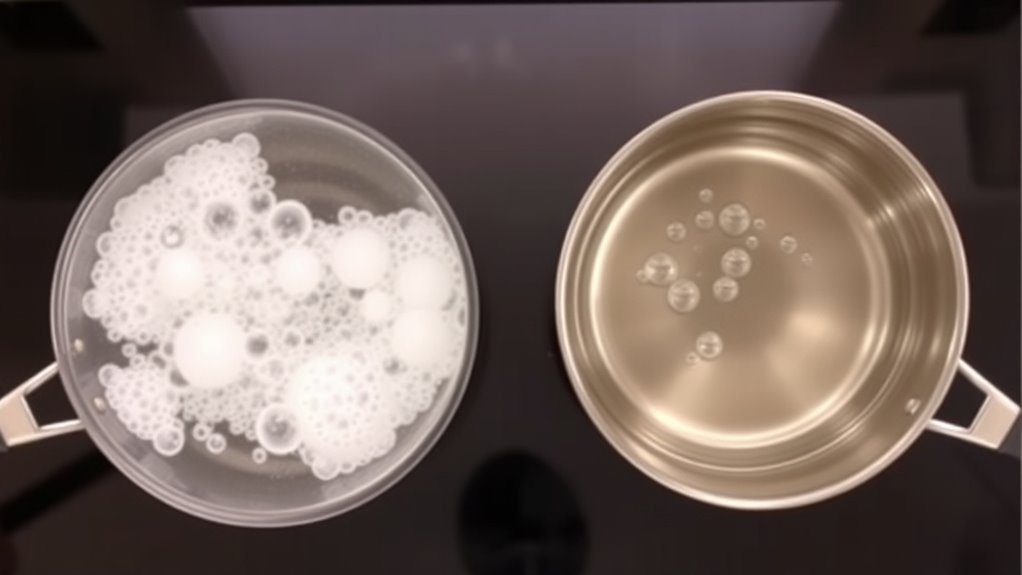
Understanding the key differences between a rolling boil and a gentle simmer is essential for effective cooking.
- Boiling Temperature: A rolling boil occurs at 212°F, while simmering ranges from 180°F-205°F.
- Bubble Size: Rolling boils produce large, vigorous bubbles; gentle simmers create smaller, sporadic bubbles.
- Cooking Method: Use boiling for quick cooking of pasta and vegetables; simmering is best for soups and delicate proteins.
- Heat Level: Maintain medium-high to high heat for boiling, and low to medium heat for simmering.
Master these differences to improve your culinary skills and achieve delicious results.
When to Use a Rolling Boil in Homebrewing
In homebrewing, using a rolling boil is a key step that greatly impacts the brewing process. You should employ a rolling boil primarily during the wort boiling phase, typically lasting 60 to 90 minutes.
This vigorous boiling sterilizes your equipment and ingredients, ensuring a clean fermentation environment. It also extracts flavors and bitterness from hops, vital for your beer’s taste profile.
Additionally, a rolling boil aids in evaporating unwanted volatile compounds, preventing off-flavors. Remember, the even heat distribution prevents scorching, making it essential for achieving ideal hop utilization and enhancing aroma and stability in your final brew. Maintaining consistent brew kettle temperature is critical, as it helps ensure desired balance of fermentable and unfermentable sugars in your beer.
Helpful Hints:
- Always maintain a rolling boil for effective flavor extraction.
- Monitor temperatures to avoid scorching.
Benefits of Gentle Simmer in Beer Brewing
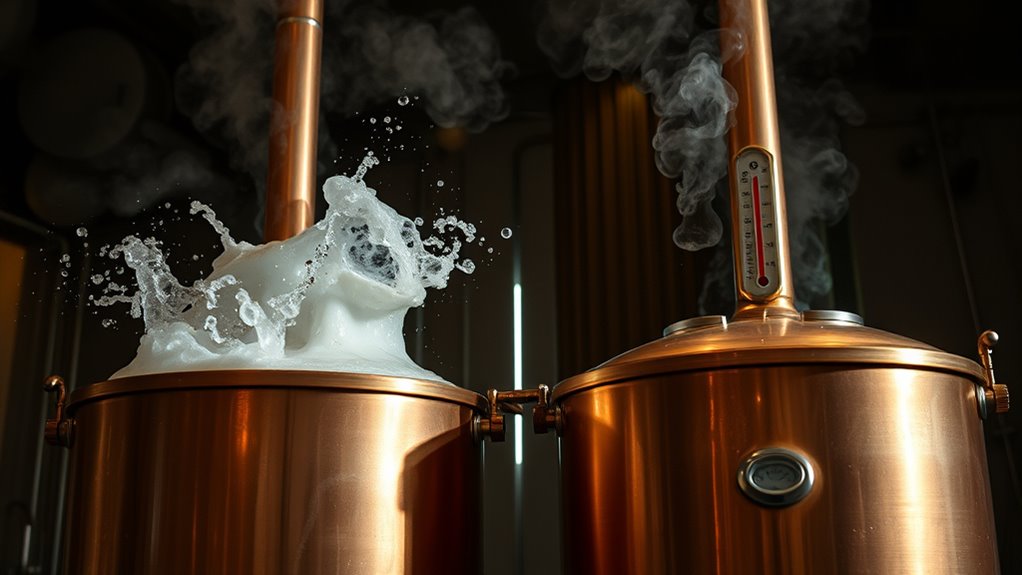
A gentle simmer offers several advantages in beer brewing, especially when it comes to flavor extraction. By maintaining a controlled temperature, you can enhance the quality of your brew.
- Preserves delicate hop oils
- Prevents unwanted bitterness from malt
- Enhances complex flavors through the Maillard reaction
- Reduces the risk of boilovers
Simmering at 180°F to 205°F allows for longer flavor extraction without over-extraction, creating a refined product.
This method also aids in clarifying the wort, improving mouthfeel and clarity. Utilizing a gentle simmer can elevate your brewing experience while ensuring a balanced and aromatic final beer.
Timing Considerations for Achieving the Perfect Boil
Achieving the perfect boil is essential in cooking, particularly when it comes to brewing beer or preparing other dishes. To optimize your cooking time, start with a pot of cold water on high heat.
Typically, it takes just a few minutes to reach a rolling boil at 212 degrees Fahrenheit. Once you add ingredients, quickly return to that vigorous boil to guarantee even cooking and prevent sogginess.
Remember, adding cold items can lower the temperature, so monitor your heat level closely and make necessary adjustments. Consistent boiling enhances flavor and texture, making your dishes truly stand out.
Helpful Hints:
- Use a large pot for faster boiling.
- Cover the pot to retain heat.
- Stir occasionally to distribute heat evenly.
Common Mistakes to Avoid in Boiling and Simmering
When boiling or simmering, avoiding common mistakes can greatly improve your cooking results. Here are some pitfalls to watch out for:
- Starting with hot water, which can lead to off flavors.
- Not maintaining a rolling boil when adding ingredients, causing uneven cooking.
- Overcrowding the pot, resulting in sticky pasta or undercooked veggies.
- Ignoring heat levels, causing fluctuations between boiling and simmering.
Tips for Mastering Boiling Techniques in Homebrewing
Mastering boiling techniques is essential for anyone involved in homebrewing, as these methods greatly influence the final product’s quality.
Helpful Hints:
- Reach a Rolling Boil: Aim for 212°F (100°C) at sea level. This temperature guarantees even cooking and ideal flavor extraction.
- Use a Thermometer: It accurately indicates when your water reaches a rolling boil, allowing you to adjust heat as needed.
- Avoid Overcrowding: Ensure enough space in your pot for vigorous bubbles and ingredient movement, preventing sticking.
- Activate Enzymes: Maintain a rolling boil when boiling grains or hops to efficiently convert starches into fermentable sugars, enhancing your brew’s flavor. Additionally, a rolling boil helps in achieving hot break by promoting protein coagulation, which can improve the clarity and stability of your beer.
